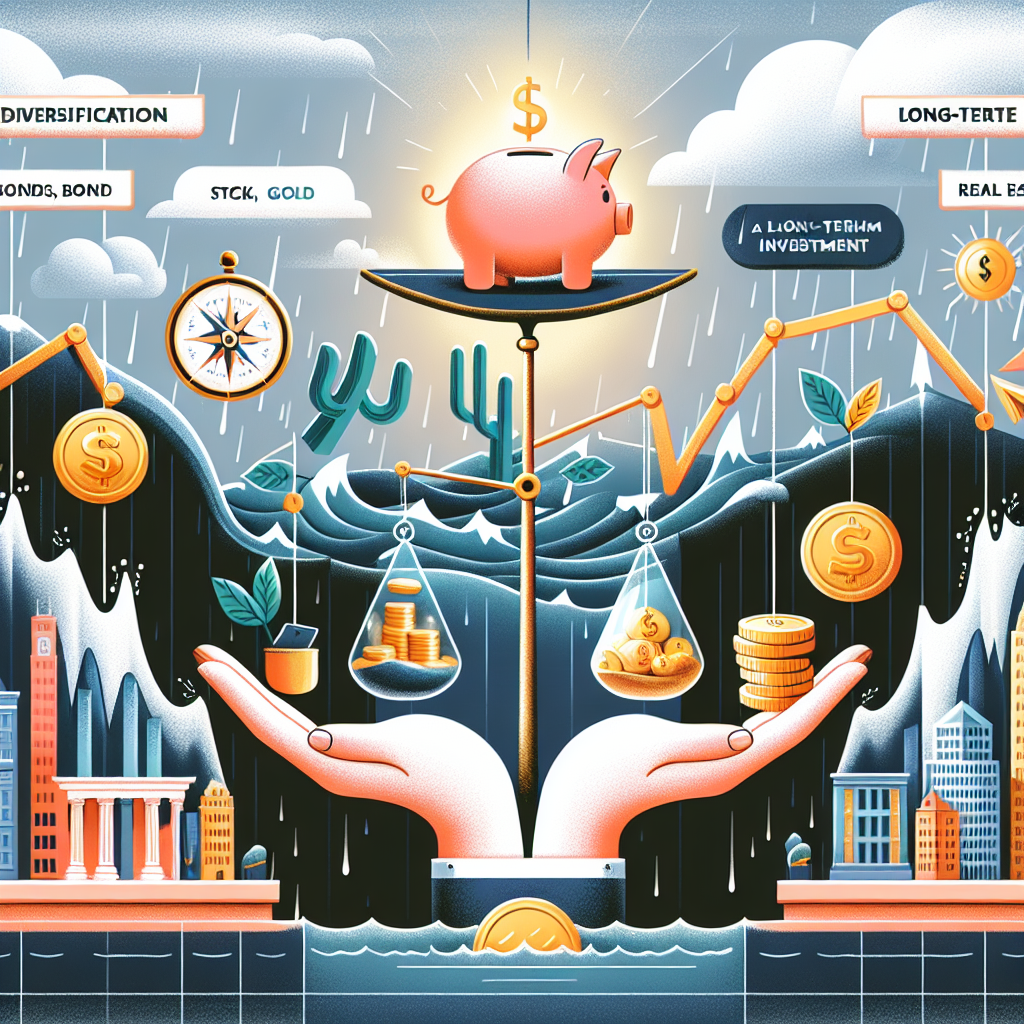Att förstå och kapitalisera på aktuemarknadstrender
The Importance of Staying Informed: How to Keep Up with Market Trends
The stock market can be a daunting and unpredictable place, with constant fluctuations and changes. As an investor, it is crucial to stay informed and up-to-date with market trends in order to make informed decisions and capitalize on potential opportunities. In this article, we will discuss the importance of staying informed and provide tips on how to keep up with market trends.
First and foremost, understanding market trends is essential for successful investing. By keeping track of market trends, investors can identify patterns and make informed decisions about when to buy or sell stocks. For example, if a particular industry is experiencing a downward trend, it may be wise to avoid investing in companies within that industry. On the other hand, if a certain sector is on the rise, it may present a good opportunity for investment. Staying informed about market trends can help investors make strategic decisions and potentially increase their returns.
One of the best ways to stay informed about market trends is to regularly read financial news and publications. These sources provide valuable insights and analysis on current market trends and events. It is important to read from a variety of sources to get a well-rounded understanding of the market. Additionally, following financial experts and analysts on social media can also provide valuable insights and updates on market trends.
Another way to stay informed about market trends is to attend conferences and seminars. These events often feature industry experts who share their knowledge and insights on current market trends. Attending these events can also provide networking opportunities and allow investors to connect with other like-minded individuals.
In today’s digital age, there are also numerous online resources available to help investors stay informed about market trends. Many financial websites and apps offer real-time updates and analysis on market trends. These resources can be accessed anytime and anywhere, making it easier for investors to stay on top of market trends.
In addition to staying informed about market trends, it is also important to understand the factors that influence them. Economic indicators, such as inflation rates, interest rates, and GDP growth, can have a significant impact on market trends. By keeping track of these indicators, investors can gain a better understanding of the current state of the market and make more informed decisions.
It is also crucial to pay attention to global events and their potential impact on the market. Political events, natural disasters, and other global crises can have a ripple effect on the stock market. Staying informed about these events and their potential impact on the market can help investors make strategic decisions and minimize potential losses.
Furthermore, it is important to remember that market trends are not always predictable. While staying informed and understanding the factors that influence market trends can help investors make informed decisions, it is also important to diversify their portfolio. Diversification can help mitigate risks and protect against potential losses in case of unexpected market changes.
In conclusion, staying informed about market trends is crucial for successful investing. By regularly reading financial news, attending conferences, and utilizing online resources, investors can stay up-to-date with market trends and make informed decisions. It is also important to understand the factors that influence market trends and to diversify one’s portfolio to minimize risks. With these tips in mind, investors can navigate the stock market with confidence and potentially capitalize on market trends.
Maximizing Profits: Strategies for Capitalizing on Market Trends
The stock market can be a daunting and unpredictable place for many investors. With constantly changing trends and fluctuations, it can be challenging to navigate and make profitable decisions. However, understanding and capitalizing on market trends can greatly increase your chances of maximizing profits. In this article, we will discuss some strategies for effectively capitalizing on market trends.
First and foremost, it is crucial to understand what market trends are and how they can impact your investments. Market trends refer to the general direction in which the stock market is moving. These trends can be short-term, long-term, or even cyclical. By analyzing these trends, investors can make informed decisions about buying and selling stocks.
One of the most important strategies for capitalizing on market trends is to stay informed. Keeping up with the latest news and developments in the market is essential for understanding current trends. This can be done through various sources such as financial news websites, market analysis reports, and even social media. By staying informed, you can identify potential opportunities and make timely decisions.
Another crucial aspect of capitalizing on market trends is to have a diversified portfolio. Diversification is the practice of investing in a variety of stocks from different industries and sectors. This strategy helps to minimize risk and protect your investments from market fluctuations. By having a diverse portfolio, you can take advantage of different market trends and reduce the impact of any potential losses.
Timing is also a crucial factor when it comes to capitalizing on market trends. It is essential to buy and sell stocks at the right time to maximize profits. This requires careful analysis and understanding of market trends. For instance, if a particular industry is experiencing a positive trend, it may be a good time to invest in stocks from that industry. On the other hand, if a sector is facing a downward trend, it may be wise to sell stocks from that industry.
In addition to staying informed and having a diversified portfolio, it is also essential to have a long-term investment strategy. While short-term gains can be tempting, it is crucial to have a long-term perspective when it comes to investing. Market trends can be unpredictable, and trying to time the market can be risky. By having a long-term strategy, you can ride out any short-term fluctuations and potentially see higher returns in the long run.
Furthermore, it is crucial to have a risk management plan in place when capitalizing on market trends. As with any investment, there is always a level of risk involved. It is essential to have a plan in place to mitigate these risks and protect your investments. This can include setting stop-loss orders, diversifying your portfolio, and regularly reviewing and adjusting your investments.
Lastly, it is essential to have a disciplined approach when it comes to capitalizing on market trends. Emotions can often cloud our judgment when it comes to investing. It is crucial to stick to your investment strategy and not let fear or greed dictate your decisions. By staying disciplined and following your plan, you can avoid making impulsive and potentially costly decisions.
In conclusion, understanding and capitalizing on market trends can greatly increase your chances of maximizing profits in the stock market. By staying informed, having a diversified portfolio, timing your investments, having a long-term strategy, and being disciplined, you can effectively capitalize on market trends and potentially see higher returns on your investments. Remember to always do your research and consult with a financial advisor before making any investment decisions. With the right approach, you can navigate the stock market with confidence and achieve your financial goals.
Navigating Volatility: How to React to Changing Market Trends
The stock market is a constantly changing landscape, with trends and patterns that can be difficult to predict. As an investor, it is important to understand and capitalize on these market trends in order to make informed decisions and maximize your returns. In this article, we will discuss the importance of understanding market trends and how to navigate through volatility in order to make the most of your investments.
First and foremost, it is crucial to understand what market trends are and how they can impact your investments. Market trends refer to the general direction in which the stock market is moving. This can include the overall performance of the market, as well as specific sectors or industries. By analyzing market trends, investors can gain insight into the current state of the market and make informed decisions about their investments.
One of the key factors that can influence market trends is volatility. Volatility refers to the degree of fluctuation in stock prices. In other words, it is the measure of how much the market is moving up and down. High volatility can be a sign of uncertainty and can make investors nervous, while low volatility can indicate a stable market. It is important to keep an eye on volatility and understand how it can impact your investments.
So, how can you navigate through volatility and make the most of market trends? The first step is to stay informed. Keep up with the latest news and developments in the market, as well as any changes in economic or political factors that may affect the market. This will help you understand the current state of the market and make more informed decisions about your investments.
Another important aspect to consider is diversification. Diversifying your portfolio means spreading your investments across different sectors, industries, and asset classes. This can help mitigate the impact of volatility on your overall portfolio. By diversifying, you are not putting all your eggs in one basket and are better prepared to weather any market fluctuations.
In addition to diversification, it is also important to have a long-term perspective when it comes to investing. Market trends can be short-term and unpredictable, but over the long-term, the market tends to move in an upward direction. By focusing on the long-term, you can avoid making impulsive decisions based on short-term market fluctuations.
It is also important to have a plan in place for when the market experiences high volatility. This can include setting stop-loss orders, which automatically sell your stocks if they reach a certain price, in order to limit potential losses. It is also important to have a target price in mind for when you want to sell your stocks and take profits. Having a plan in place can help you stay disciplined and avoid making emotional decisions during times of market volatility.
Furthermore, it is important to keep a close eye on your investments and make adjustments as needed. This does not mean constantly buying and selling stocks, but rather regularly reviewing your portfolio and making changes if necessary. This can include rebalancing your portfolio to maintain your desired asset allocation or selling stocks that are underperforming.
In conclusion, understanding and capitalizing on market trends is crucial for successful investing. By staying informed, diversifying your portfolio, having a long-term perspective, and having a plan in place for market volatility, you can navigate through changing market trends and make the most of your investments. Remember to always do your research and consult with a financial advisor if needed. With the right knowledge and approach, you can navigate through volatility and achieve your investment goals.
The Role of Research: Using Data to Understand Market Trends
The stock market can be a daunting and unpredictable place for many people. With constantly changing trends and fluctuations, it can be challenging to understand and navigate. However, with the right research and data, one can gain a better understanding of market trends and even capitalize on them.
Research plays a crucial role in understanding market trends. It involves gathering and analyzing data to identify patterns and make informed decisions. Without proper research, investing in the stock market can be akin to gambling. It is essential to have a solid understanding of the market and its trends before making any investment decisions.
One of the first steps in conducting research is to gather data from reliable sources. This can include financial reports, news articles, and market analysis from reputable sources. It is crucial to ensure that the data is up-to-date and accurate to make informed decisions. With the rise of technology, there are also various tools and software available that can help in data analysis and trend identification.
Once the data is collected, the next step is to analyze it. This involves looking for patterns and trends that can help in understanding the market. For example, one may notice that a particular industry is experiencing a surge in demand, leading to an increase in stock prices. This trend can be further analyzed to determine the factors driving the demand and whether it is sustainable in the long run.
Another essential aspect of research is to keep an eye on the news and current events. The stock market is heavily influenced by global events, such as political changes, economic policies, and natural disasters. By staying informed about these events, one can anticipate their impact on the market and make informed decisions accordingly.
Research also involves understanding the different types of market trends. There are three main types of trends – uptrend, downtrend, and sideways trend. An uptrend is when the market is experiencing a consistent increase in prices, while a downtrend is when there is a consistent decrease in prices. A sideways trend, also known as a range-bound market, is when the market is moving within a specific price range. By identifying these trends, one can make strategic investment decisions.
One of the most significant benefits of conducting research is the ability to capitalize on market trends. By understanding the market and its trends, one can identify potential investment opportunities. For example, if a particular industry is experiencing a downturn, it may be an opportune time to invest in stocks of companies in that industry at a lower price. Similarly, if a particular stock is experiencing an uptrend, it may be a good time to sell and make a profit.
However, it is essential to note that market trends are not always accurate indicators of future performance. It is crucial to conduct thorough research and not rely solely on trends when making investment decisions. Other factors, such as company financials and industry analysis, should also be considered.
In conclusion, research plays a vital role in understanding and capitalizing on market trends. It involves gathering and analyzing data, staying informed about current events, and understanding the different types of trends. By conducting thorough research, one can make informed decisions and potentially benefit from market trends. Remember, the stock market is constantly changing, and it is essential to stay updated and adapt to new trends to succeed in the long run.
Timing is Key: How to Identify and Take Advantage of Emerging Market Trends
The stock market can be a daunting and unpredictable place, with constant fluctuations and changes. As an investor, it is crucial to understand and capitalize on market trends in order to make informed decisions and maximize profits. In this article, we will discuss the importance of timing in identifying and taking advantage of emerging market trends.
First and foremost, it is essential to understand what market trends are and how they can impact your investments. Market trends refer to the general direction in which the market is moving, whether it is up, down, or sideways. These trends can be short-term, lasting a few weeks or months, or long-term, lasting several years. By identifying and analyzing these trends, investors can make strategic decisions to buy or sell stocks at the right time.
One of the key factors in successfully capitalizing on market trends is timing. As the saying goes, ”timing is everything,” and this holds true in the stock market. Identifying trends early on and taking action at the right time can make a significant difference in your investment returns. This is why it is crucial to stay informed and keep a close eye on the market.
So, how can you identify emerging market trends? One way is to pay attention to the news and keep up with current events. Economic and political developments can have a significant impact on the stock market, and being aware of these events can help you anticipate potential market trends. Additionally, keeping track of industry-specific news and developments can also provide valuable insights into emerging trends.
Another useful tool for identifying market trends is technical analysis. This involves studying charts and patterns to identify potential trends and make predictions about future market movements. While technical analysis is not foolproof, it can provide valuable information and help investors make more informed decisions.
Once you have identified an emerging market trend, the next step is to take advantage of it. This can be done in several ways, depending on your investment strategy. For example, if you are a short-term trader, you may choose to buy and sell stocks based on the trend’s direction. On the other hand, if you are a long-term investor, you may choose to hold onto stocks that align with the trend and sell when the trend starts to reverse.
It is also essential to keep in mind that market trends can change quickly, and it is crucial to be flexible and adapt to these changes. This is where risk management comes into play. It is essential to have a plan in place to minimize potential losses in case the market trend does not go as expected. This can include setting stop-loss orders or diversifying your portfolio to reduce risk.
In addition to timing and risk management, it is also crucial to have a long-term perspective when it comes to investing in the stock market. While it can be tempting to try and time the market and make quick profits, it is essential to remember that investing is a long-term game. By focusing on long-term trends and staying disciplined, investors can achieve sustainable and consistent returns.
In conclusion, understanding and capitalizing on market trends is crucial for success in the stock market. By staying informed, using technical analysis, and having a solid risk management plan, investors can identify and take advantage of emerging market trends. Remember, timing is key, but having a long-term perspective is equally important. With these strategies in place, investors can navigate the ever-changing stock market and make informed decisions to achieve their financial goals.




















